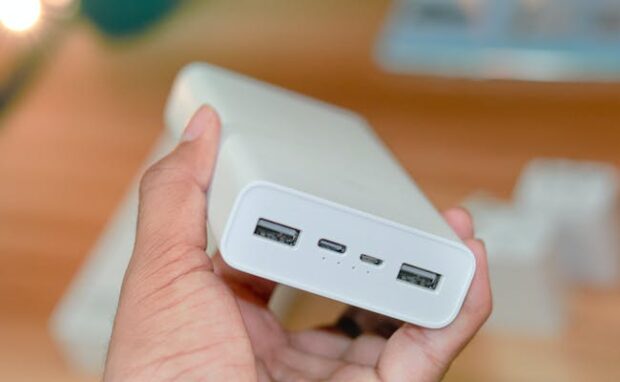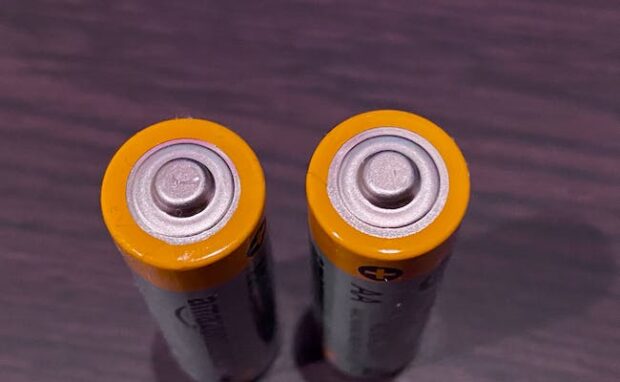Vanadium battery stores renewable energy
Chinese scientists created a new type of vanadium flow battery stack, which could revolutionize the field of large-scale energy storage. Its main component is its stack, which consists of cells that turn chemical energy into electrical energy. The unique design gives it more energy efficiency and storage while taking up less space.
Renewable energy sources like solar and wind can’t provide a consistent energy flow, so we need dependable methods of storing the power they generate. Also, we need these storage devices to occupy as little space as possible to reduce operating costs. Fortunately, China’s latest energy innovation may solve this problem.
This article will provide more details regarding these Vanadium Flow Batteries. Later, I will discuss another battery breakthrough.
How does this Vanadium battery work?

Let’s briefly discuss what Vanadium is before explaining the latest battery made from it. The Australian Vanadium Project says it is a “hard, silver-grey metallic element.
It conducts electricity, resists corrosion, and remains stable against alkalines, acids, and salt water. More importantly, experts turn it into Vanadium Flow Batteries (VFBs) for a reliable, safe, and stable renewable energy storage method.
They also have a long cycle life, low fire risk, and excellent recyclability. However, previous models have low energy densities and high upfront costs.
That is why researchers from the Dalian Institute of Chemical Physics (DICP) of the Chinese Academy of Science created a better design. They developed a 70 kW-level, high-power density vanadium battery stack.
In contrast, previous models only have 30 kW-level stacks. Moreover, these new VFBs have a higher power density of 130kW/m3, costing 40% less than existing batteries.
Solar and storage media news platform PV Magazine said the DICP stack is highly upgradeable. It can upgrade from 250 kW to 500 kW without significantly increasing the size of power units and the cost of system-supporting facilities.
You may also like: Scientists turn humid air into renewable energy
The researchers designed it on “self-developed highly selective weldable, porous composite membranes and weldable highly conductive bipolar plates.” Also, it uses a low flow resistance, high distribution uniformity, and a short flow path, which is an ultra-thin battery structure.
It has an energy efficiency of 81% under 70 kW rated power charge and discharge conditions. Moreover, the former raises to 82.1% under 60 kW constant power charge and discharge conditions.
The stack maintains stable operations after over 1,200 cycles with only 1.7% energy efficiency decay. “We believe that the development of this stack will improve the integration of power units in energy,” said research team leader Prof. Li Xianfeng.
Another battery innovation

Researchers from the Chinese tech firm Betavolt invented something similar to the Vanadium battery. Specifically, it is a radioactive energy cell that can run small electronics for 50 years!
Betavolt’s BV100 energy cell uses Nickel-63, which is a radioactive material. Also, I explained in another article it uses diamond semiconductors as energy converters.
Nickel-63 releases decay energy as it loses protons. The radioactive battery turns that into electrical energy.
Elements like nickel turn into new ones as they lose subatomic particles. Specifically, Nickel-63 transforms into copper as it loses electrons and protons.
This process turns it into a safe, recyclable material once it has operated for decades. Copper is an important component of all electrical devices.
Betavolt says its radioactive battery can remain stable and functional in extreme temperatures. Moreover, it can run at -60 °C to 120 °C without leaking or overheating.
In contrast, traditional, non-rechargeable batteries may ooze hazardous liquid after extended use. Also, rechargeable energy cells may overheat and explode when left in extreme heat.
More importantly, BV100’s modular design allows for versatile applications. For example, the Chinese company initially built a radioactive energy source for pacemakers and other medical implants.
That makes BV100 small enough for handheld gadgets like smartphones. Imagine your future phone running for 50 years without connecting to a power outlet or portable charger!
You may also like: Construction robot stacks walls by itself
You may also deploy several of the revolutionary power sources for larger machines. For example, multiple BV100s could power satellites and artificial intelligence programs.
The company acknowledges fears of triggering Fukushima-like disasters with its invention. However, it allays the public’s fears by explaining that BV100 does not emit external radiation.
Betavolt said its radioactive battery is still in its pilot testing stage. Yahoo Finance said the Chinese tech pioneer will produce a 1-watt battery by 2025.
Conclusion
Dalian Institute of Chemical Physics researchers created a Vanadium battery that stores more electricity in a smaller package than previous models. As a result, it is more energy and budget-efficient than existing methods.
We need effective means of storing energy collected through wind and solar; this latest invention might be the solution. However, it requires further research and development to unlock its fullest potential.
Likewise, unlock your potential in the growing digital age by learning the latest trends. Start by following Inquirer Tech.